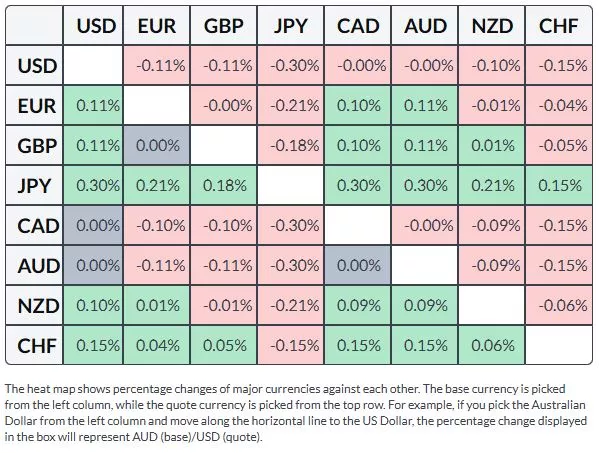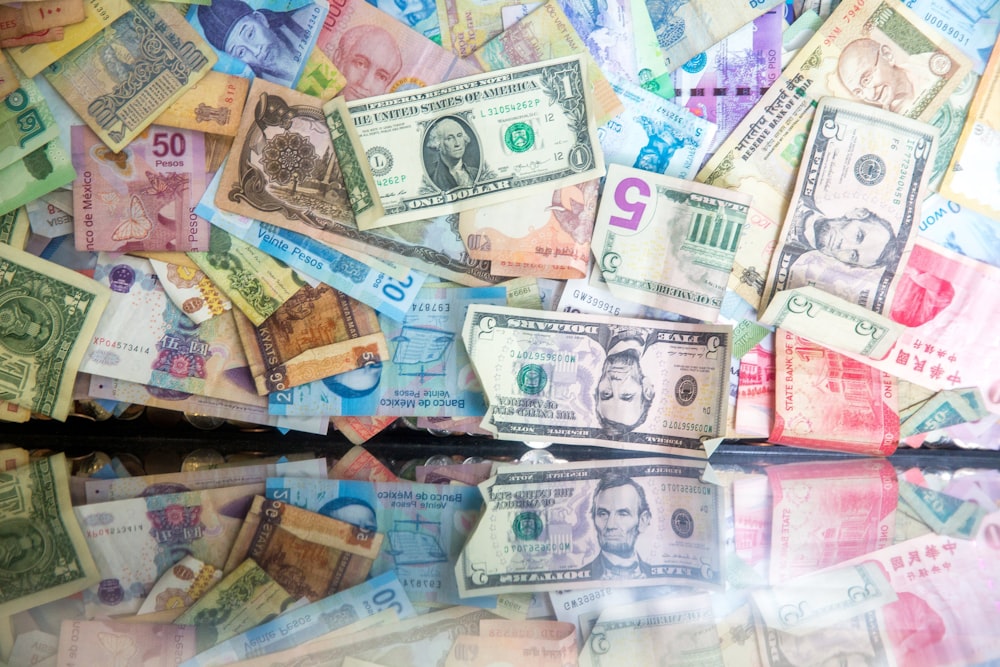Australian Dollar Holds Gains As US Dollar Declines On Fed Rate Cut Bets
Image Source: Unsplash
The Australian Dollar (AUD) edges higher against the US Dollar (USD) on Tuesday for the second successive session. The AUD/USD pair gained ground due to decreasing rate cut bets by the Reserve Bank of Australia (RBA). Markets are now assigning only a 15% probability to a rate cut next week, a steep drop from 60% earlier, following RBA Governor Michele Bullock’s remarks on Monday.
RBA Governor Bullock reiterated that the labor market remains a little tight, despite the unemployment rate jump being a surprise. Investors are now focused on Wednesday’s release of the Q3 inflation data and the September Monthly CPI indicator for additional insight into the future path of interest rates.
The AUD also gained support from optimism over progress in the United States (US)–China trade negotiations. US and Chinese negotiators reached a consensus on major disputes, which paves the way for Presidents Donald Trump and Xi Jinping to meet on Thursday to finalize a trade deal aimed at easing tensions. Officials in Malaysia announced after two days of talks that both sides had agreed on key issues, including export controls, fentanyl, and shipping levies. Any shift in China’s economic conditions could also affect the Australian dollar (AUD), given the close trade ties between China and Australia.
US Dollar declines due to increased likelihood of Fed rate cuts
- The US Dollar Index (DXY), which measures the value of the US Dollar against six major currencies, is extending its losses and trading around 98.70 at the time of writing. The Greenback struggles as traders expect the Federal Reserve (Fed) to deliver a rate cut on Wednesday.
- The Fed is widely expected to lower interest rates by another quarter point, bringing the benchmark rate to 3.75-4.00%, at its October meeting. The CME FedWatch Tool indicates that markets are now pricing in nearly a 97% chance of a Fed rate cut in October and a 96% possibility of another reduction in December.
- The US government shutdown has ignited debate among Federal Reserve officials, as policymakers weigh whether to cut rates soon to support a weakening labor market or maintain current levels amid inflation that remains persistently above the Fed’s 2% target.
- The US Bureau of Labor Statistics (BLS) reported on Friday that the US Consumer Price Index (CPI) rose 3.0% year-over-year (YoY) in September, following a 2.9% increase in the prior month. This reading came in below the market expectation of 3.1%. Meanwhile, the monthly CPI increased 0.3%, against the 0.4% rise seen in August. The core CPI increased 0.2% month-over-month, compared to the market consensus of 0.3%, while the yearly core CPI was up 3.0% in September.
- US Treasury Secretary Scott Bessent told CBS News that President Trump’s threat to impose 100% tariffs on Chinese goods “is effectively off the table.” Bessent added that China has agreed to make “substantial” soybean purchases and to postpone its rare-earth export controls “for a year while they re-examine it.”
- The preliminary Australia's S&P Global Manufacturing Purchasing Managers Index (PMI) fell to 49.7 in October from 51.4 prior. Meanwhile, Services PMI rose to 53.1 in October from the previous reading of 52.4, while the Composite PMI increased to 52.6 in October against 52.4 prior.
Australian Dollar holds gains above 0.6550, near 50-day EMA
AUD/USD is trading around 0.6560 on Tuesday. Technical analysis of a daily chart suggests a bullish reversal as the pair is positioned slightly above the upper boundary of the descending channel. The pair is also trading above the nine- and 50-day Exponential Moving Averages (EMAs), indicating that both short- and medium-term price momentum remain strong.
On the upside, the immediate barrier lies at the psychological level of 0.6600. A break above this level would support the AUD/USD pair to explore the region around the 12-month high of 0.6707, which was recorded on September 17.
The initial support lies at the 50-day EMA of 0.6542, followed by the nine-day EMA at 0.6526. A break below these levels would revive the bearish bias and prompt the AUD/USD pair to navigate the area around the four-month low of 0.6414, followed by the lower boundary of the descending channel around 0.6380.
AUD/USD: Daily Chart

Australian Dollar Price Today
The table below shows the percentage change of Australian Dollar (AUD) against listed major currencies today. Australian Dollar was the strongest against the US Dollar.

More By This Author:
UK Retail Sales Rise 0.5% MoM In September Vs. -0.2% ExpectedEUR/JPY Price Forecast: Could Target Record Highs On A Successful Break Above 177.00
Australian Dollar Recovers Losses On Optimism Surrounding US-China Trade Deal
Information on these pages contains forward-looking statements that involve risks and uncertainties. Markets and instruments profiled on this page are for informational purposes only and should not ...
more



